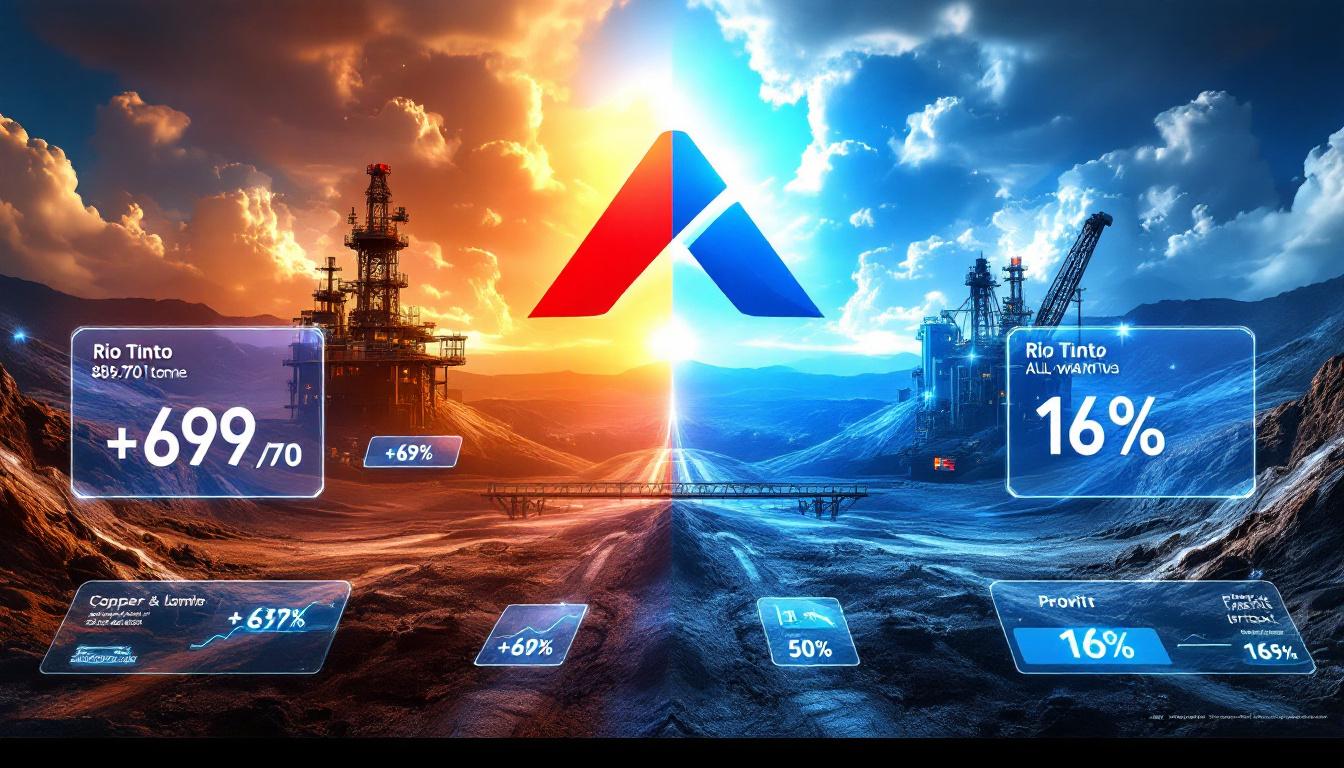What Led to the Congo Cobalt Export Ban?
The Democratic Republic of Congo (DRC) implemented a significant cobalt export ban in early 2025, marking a pivotal moment in global mineral markets. The decision came after prolonged market challenges that threatened the stability of one of the country's most strategic resources.
Market Oversupply and Price Stabilization Efforts
The initial catalyst for government intervention example was a severe market oversupply situation that had developed throughout 2024. By February 2025, cobalt prices had plummeted to approximately $10 per pound – a level that undermined the economic viability of many mining operations within the country.
The DRC government, recognizing the threat to its mining sector, implemented a four-month suspension of all cobalt exports. This decisive move was designed specifically to address the oversupply issues and support price recovery in a market that had become increasingly volatile.
"The export ban was primarily a market correction mechanism, designed to bring stability to cobalt prices that had become unsustainable for producers," noted Mining Technology in their analysis of the situation.
Analysts have pointed out that the DRC's action follows a pattern seen in other resource-rich nations that have used export restrictions to protect strategic minerals and enhance their position in global supply chains.
Extension of the Original Ban
What began as a temporary measure has evolved into a more extended market intervention. In June 2025, the DRC government announced a three-month extension to the initial ban, pushing the expiration date to September 2025.
This extension demonstrates the government's commitment to achieving its price stabilization goals. The policy includes flexibility provisions that allow authorities to modify, extend, or terminate the suspension before the September deadline, depending on market conditions and price recovery metrics.
Economic analysts note that the extension signals the DRC's willingness to use its dominant market position as leverage in global mineral markets. With each month of the ban, global stockpiles decrease and prices continue to climb – exactly the outcome DRC officials had hoped to achieve.
What Impact Has the Ban Had on Global Cobalt Markets?
The export ban has reverberated throughout global commodity markets, transforming the cobalt landscape and disrupting established supply chains. The effects have been both immediate and far-reaching.
Price Recovery and Market Response
Since the implementation of the ban in February 2025, cobalt prices have experienced a remarkable recovery. From the pre-ban low of approximately $10 per pound, prices have climbed steadily over the past five months, now approaching $16 per pound on COMEX – representing a substantial 60% increase.
This price resurgence has validated the DRC government's strategy, demonstrating the country's considerable influence over global cobalt markets. The recovery has also provided much-needed relief to mining operations that had been struggling with unsustainably low prices.
Market analysts note that the price increase reflects both the physical reduction in available supply and a psychological component as traders anticipate potential longer-term restrictions. This combination has accelerated price movement beyond what might be expected from the supply reduction alone.
Force Majeure Declarations
One of the most significant consequences of the export ban has been the wave of force majeure declarations across the industry. Major mining companies have been legally compelled to invoke these contractual clauses due to their inability to fulfill delivery obligations.
IXM, owned by China's CMOC Group, was among the first to formally declare force majeure on its cobalt deliveries. In a statement released via social media, the company explained that the export ban had "rendered it legally and practically impossible for IXM's suppliers… to export cobalt products from the DRC."
Following IXM's lead, other major players including Glencore and Eurasian Resources Group have also declared force majeure on their contracts. These declarations highlight the legal impossibility of fulfilling contractual obligations due to the government-imposed restrictions.
The cascade of force majeure notifications has disrupted established supply chain crisis and created significant uncertainty for downstream manufacturers who rely on consistent cobalt supply for battery production and other applications.
How Are Major Mining Companies Responding?
The export ban has forced major mining companies to adapt their strategies and operations. With billions in assets and contractual obligations at stake, these companies have had to navigate the complex regulatory environment while maintaining their business viability.
CMOC Group Operations and Projections
CMOC Group, which operates as the world's largest cobalt producer, has found itself at the center of this market disruption. Despite the export restrictions, the company has maintained robust production at its DRC operations.
For 2025, CMOC has projected an output between 100,000-120,000 tonnes of cobalt from its Tenke Fungurume Mining (TFM) and Kisanfu Mining (KFM) operations. This represents a continued increase from 56,000 tonnes in 2023 to 114,000 tonnes in 2024, highlighting the company's expanded production capacity despite market challenges.
The company's Q1 2025 performance demonstrated exceptional operational results, with copper output reaching 170,574 tonnes – a 15.65% year-on-year increase. Even more impressively, Q1 cobalt production hit 30,414 tonnes, representing a 20.68% year-on-year increase.
These production figures illustrate that while the export ban prevents product from leaving the country, mining operations themselves continue at full capacity – creating a growing stockpile of material within DRC borders.
Supply Chain Disruptions
The export ban has created significant complications for companies like IXM that serve as intermediaries in the global supply chain. As noted in their force majeure declaration, IXM suppliers are legally unable to export cobalt products from the DRC, making it impossible to fulfill contractual obligations to customers worldwide.
This disruption has cascaded through the supply chain, affecting battery manufacturers, electronics producers, and ultimately consumer goods companies that rely on cobalt-containing components. The timing is particularly challenging as global electric vehicle production continues to accelerate, increasing demand for battery materials.
Companies throughout the supply chain are now working to develop contingency plans, including:
- Sourcing from alternative, albeit more expensive, non-DRC suppliers
- Negotiating contract modifications with customers
- Exploring technological alternatives that use less cobalt
- Developing stockpile management strategies to minimize disruption
Why is Congo's Cobalt Production So Significant?
The Democratic Republic of Congo's influence over global cobalt markets cannot be overstated. The country's geological endowment has positioned it as the decisive player in this critical mineral space.
DRC's Dominance in Global Cobalt Supply
The DRC stands as the world's largest cobalt producer by an overwhelming margin. The country controls approximately 70% of global cobalt production, creating an unparalleled concentration of supply that makes the global market particularly vulnerable to disruption from a single source.
This market dominance stems from the country's exceptional geological formations, particularly in the copper-cobalt belt that runs through the southern provinces. These deposits contain some of the highest-grade cobalt ores in the world, making them economically attractive even during periods of lower prices.
The scale of DRC's cobalt production becomes even more significant when considering that the remaining 30% of global supply is fragmented across numerous countries including Russia, Australia, Canada, and Cuba – none of which individually approaches even a fraction of DRC's output.
Strategic Importance of Cobalt
Cobalt's significance extends far beyond its market value as a commodity. The mineral has become a cornerstone of the global energy transition, playing a critical role in several key technologies:
-
Lithium-ion batteries: Cobalt is an essential component in the cathodes of many lithium-ion batteries, particularly those used in electric vehicles, where it provides thermal stability and extends battery life.
-
Renewable energy storage: Grid-scale energy storage systems often rely on cobalt-containing batteries to store energy from intermittent renewable sources like wind and solar.
-
Consumer electronics: Smartphones, laptops, and other portable devices depend on cobalt-containing batteries for their power needs.
-
Aerospace and defense: Cobalt is used in superalloys for jet engines and defense applications due to its heat and wear resistance properties.
This multifaceted importance makes cobalt a truly strategic mineral in global decarbonization efforts. As countries worldwide commit to reducing carbon emissions and transitioning to electric vehicles, the demand for cobalt continues to grow – making DRC's supply position increasingly influential.
What Are the Long-Term Implications of the Export Ban?
While the immediate impacts of the ban are already apparent in price movements and force majeure declarations, the longer-term implications could be even more significant, potentially reshaping global mineral supply chains.
Supply Chain Resilience Concerns
The export ban has exposed the vulnerability of global supply chains to single-source dependencies. With 70% of cobalt production concentrated in one country, manufacturers have little flexibility when disruptions occur.
This reality has accelerated discussions about supply chain resilience across industries that depend on cobalt. Companies and governments are now more urgently evaluating strategies to reduce vulnerability, including:
- Developing alternative cobalt sources outside the DRC
- Creating strategic reserves of critical minerals
- Funding exploration projects in politically stable jurisdictions
- Establishing more transparent and diversified supply chains
The European Union and United States have both classified cobalt as a critical minerals & energy material, highlighting its importance to economic and national security. The ban may accelerate governmental efforts to secure diverse supply sources through strategic partnerships and investment incentives.
Market Restructuring Possibilities
Beyond resilience concerns, the export ban could fundamentally restructure how cobalt moves through global markets. One significant possibility is the development of more processing capacity within the DRC itself.
By restricting raw material exports, the DRC government may be creating incentives for mining companies to invest in domestic processing facilities – adding value to cobalt products before export and potentially capturing more of the mineral's economic value within the country.
This strategy mirrors approaches taken by other resource-rich nations like Indonesia, which banned nickel ore exports to encourage domestic processing and manufacturing. The result in Indonesia was significant investment in processing facilities and increased local employment.
The ban may also encourage development of alternative battery chemistries with reduced cobalt content. Several manufacturers have already been working on lower-cobalt or cobalt-free alternatives, and the supply uncertainty and higher prices resulting from the ban could accelerate these efforts.
How Might This Affect Battery Material Prices?
The Congo cobalt export ban has significant implications for the entire battery supply chain, potentially affecting costs from raw materials through to finished products.
Downstream Cost Implications
Higher cobalt prices directly impact the production costs of lithium-ion batteries, particularly those with cobalt-intensive chemistries like nickel-manganese-cobalt (NMC) and lithium-cobalt-oxide (LCO). With cobalt prices rising 60% since the ban's implementation, manufacturers are facing challenging cost calculations.
Battery manufacturers typically operate on thin margins and long-term supply contracts. The force majeure declarations have disrupted these contracts, potentially forcing manufacturers to secure spot market material at significantly higher prices.
These increased costs may eventually be passed through to electric vehicle manufacturers and ultimately to consumers. Industry analysts estimate that for every $1 per pound increase in cobalt prices, the cost of an average EV battery pack could rise by approximately $50-70, depending on battery chemistry and cobalt content.
For context, with prices rising from $10 to $16 per pound, this translates to potential cost increases of $300-420 per vehicle – a meaningful amount in the competitive EV market where manufacturers are working to achieve price parity with internal combustion vehicles.
Alternative Material Development
The price volatility and supply uncertainty created by the export ban provide additional incentives for researchers and manufacturers to develop cobalt alternatives. Several approaches are gaining momentum:
-
Lithium iron phosphate (LFP) batteries: Already popular in certain market segments, these cobalt-free batteries may see accelerated adoption despite their lower energy density.
-
High-nickel, low-cobalt chemistries: Reducing cobalt content while maintaining performance through higher nickel content and advanced engineering.
-
Sodium-ion batteries: These emerging alternatives use abundant, low-cost materials and could potentially serve certain market segments.
-
Solid-state batteries: Advanced designs that may reduce or eliminate cobalt requirements while offering performance improvements.
The ban has also intensified interest in recycling and urban mining opportunities. Companies specializing in recovering cobalt from used batteries and electronic waste are seeing increased investment as the value of their recovered materials rises with market prices.
"Battery recycling economics improve dramatically when raw material prices rise," notes Mining Technology. "The cobalt export ban may accelerate investments in circular economy solutions that reduce dependence on newly-mined materials."
What's Next for the Congo Cobalt Market?
As the market adjusts to the export restrictions, stakeholders are closely watching for signals about future policy directions and potential outcomes once the current ban period concludes.
Potential Policy Developments
The DRC government has maintained flexibility in its approach, preserving options to modify, extend, or terminate the export restrictions. Several potential scenarios could unfold after the September 2025 deadline:
-
Complete termination: The government could lift restrictions entirely if price targets have been met and market stability achieved.
-
Graduated export quotas: Rather than a binary ban/no-ban approach, the DRC might implement a quota system that limits exports to specific volumes, providing more predictable market conditions.
-
Selective restrictions: The government could differentiate between raw concentrate exports and value-added products, encouraging domestic processing while allowing some exports.
-
Extended full ban: If price objectives haven't been met, the government could extend the complete ban for additional periods.
The development of new regulatory frameworks for mineral exports is also likely. These might include more transparent pricing mechanisms, traceability requirements, or local content provisions that ensure economic benefits remain within the DRC.
Industry Adaptation Strategies
Mining companies and downstream consumers are not passively waiting for policy clarity. Instead, they're developing comprehensive contingency strategies:
-
Geographical diversification: Accelerating exploration and development of cobalt projects outside the DRC, particularly in politically stable jurisdictions like the Cobalt Blue expansion in Australia.
-
Strategic stockpiling: Major consumers are building inventories where possible to insulate against future disruptions.
-
Vertical integration: Some battery manufacturers are investing directly in mining operations to secure supply.
-
Technological adaptation: Accelerating research into cobalt-thrifting technologies that reduce material requirements without compromising performance.
-
Financial hedging: Implementing more sophisticated financial instruments to manage price volatility.
These adaptations will shape the mining industry evolution long after the current export ban is resolved, potentially creating a more resilient but also more complex global cobalt market.
FAQ: Congo Cobalt Export Ban
When did the Congo cobalt export ban begin?
The Democratic Republic of Congo initially implemented the cobalt export ban in February 2025 as a four-month suspension. In June 2025, the government extended the ban for an additional three months, setting a new expiration date of September 2025, though the policy includes provisions for modification before that deadline.
Why did Congo implement the cobalt export ban?
The DRC government implemented the ban primarily to address severe market oversupply issues and support cobalt prices, which had fallen to approximately $10 per pound. The restriction aims to stabilize the market by limiting supply from the world's largest cobalt producer, protecting the economic viability of mining operations within the country.
How has the ban affected cobalt prices?
Since the implementation of the ban in February 2025, cobalt prices have recovered significantly, rising from approximately $10 per pound to nearly $16 per pound on COMEX—a 60% increase. This price recovery reflects both the physical reduction in available supply and market anticipation of potential longer-term restrictions.
What is force majeure and why are companies declaring it?
Force majeure is a legal provision that excuses parties from fulfilling contractual obligations due to extraordinary circumstances beyond their control. Companies like IXM, Glencore, and ERG have declared force majeure because the export ban has made it legally impossible to fulfill their cobalt delivery contracts, protecting them from liability for contract breaches resulting from government action.
How much cobalt does CMOC produce in Congo?
CMOC, the world's largest cobalt producer, projects its 2025 output to be between 100,000 and 120,000 tonnes from its Tenke Fungurume Mining (TFM) and Kisanfu Mining (KFM) operations in the DRC. This represents a significant increase from 56,000 tonnes in 2023 and 114,000 tonnes in 2024. In Q1 2025 alone, CMOC produced 30,414 tonnes of cobalt, demonstrating continued production growth despite export restrictions.
Further Exploration:
Readers interested in learning more about the Congo cobalt export ban can also explore related educational content from Mining Technology's article "IXM declares force majeure due to extended Congo cobalt export ban".
Want to Stay Ahead of Major Mineral Discoveries?
Discovery Alert's proprietary Discovery IQ model instantly notifies investors about significant ASX mineral discoveries like those in the DRC cobalt market, providing real-time insights before the broader market reacts. Explore historic returns of major mineral discoveries at the Discovery Alert discoveries page and gain your market-leading advantage today.




